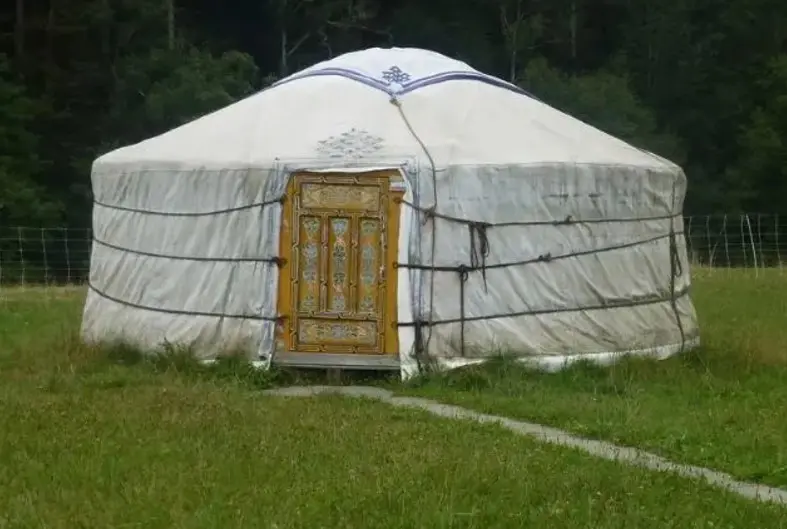Yurts and traditional camping tents each provide unique advantages for outdoor enthusiasts, but they cater to different needs and preferences. Whether planning for short-term camping, glamping, or a semi-permanent shelter in nature, understanding the benefits and limitations of both options can help you make an informed choice.
To explore high-quality options, visit yurt tent, where a variety of styles and materials are available to enhance outdoor experiences.
1. Structural Differences: Yurt vs. Tent
Yurt Construction
A yurt is a round, semi-permanent structure that combines a wooden frame with durable, weather-resistant fabric. Modern yurts feature insulated walls, sturdy roofs, and often come with flooring, doors, and even windows. This makes them well-suited for extended stays and extreme weather conditions. Traditional yurts originated from Central Asia, where they were designed to withstand harsh climates. In contemporary use, yurts can be equipped with additional comforts, such as wood stoves and ventilation systems, making them suitable for year-round use.
Tent Construction
Tents, on the other hand, are lighter and easier to assemble. Made from materials like polyester or nylon, tents are designed for portability and quick setup. They come in various sizes and styles but are generally not as weather-resistant or insulated as yurts. Tents are ideal for short-term camping and are meant to be packed up and transported frequently.
2. Durability and Weather Resistance
Yurt Durability
Yurts are typically made from stronger, more durable materials, such as wood and heavy-duty fabric, which withstand extreme weather. They are also more wind-resistant than tents due to their rounded design. Many yurts come with thick, insulated walls that can keep the interior warm during winter months and cooler in the summer, making them suitable for all-season use. Additionally, yurts can be anchored into the ground for extra stability in windy or stormy conditions.
Tent Durability
While some tents are made for three- or four-season use, their lightweight materials make them more susceptible to wear and tear, especially in harsh weather. Tents are not typically designed to stay up for extended periods, as UV exposure and extreme weather can deteriorate the fabric over time. In cold or rainy climates, tents may require additional layers or waterproofing, but they generally do not offer the same level of insulation or weather resistance as a yurt.
3. Comfort and Interior Space
Yurt Comfort
One of the significant advantages of a yurt is the spacious interior. Most yurts are built with higher ceilings, giving occupants more headroom and a feeling of openness. The sturdy floor and walls provide a stable environment where furniture, heaters, and even small kitchen setups can be installed, creating a “home away from home” experience. Yurts also allow for better customization in terms of lighting and furnishing, which enhances comfort.
Tent Comfort
Tents vary in size, but even large tents tend to have limited headroom and usable interior space compared to yurts. Tents often require campers to sleep on the ground or on small camping mats, which can be uncomfortable, especially for extended stays. Larger tents, such as those used in glamping, offer more comfort and sometimes include basic furniture, but they still lack the structural support and insulation of a yurt.
4. Portability and Ease of Setup
Yurt Portability
While yurts are more comfortable and durable, they are not as portable as traditional tents. Setting up a yurt requires more time and effort, as it involves assembling the wooden frame and covering it with fabric. Additionally, yurts are often too heavy for a single person to set up and require a vehicle for transport. This makes them suitable for semi-permanent installations rather than spontaneous camping trips.
Tent Portability
Tents are highly portable and are designed for easy setup and takedown, often within minutes. Most tents can be transported by one person and fit in a car trunk, making them ideal for backpacking, hiking, and short camping trips. For those who prioritize mobility and flexibility, a tent is the better choice.
5. Cost Comparison
Yurt Costs
Yurts are a larger financial investment than tents, reflecting their durability and comfort. Prices vary depending on size, insulation, and additional features, but most yurts cost significantly more than high-quality tents. This makes them a good choice for long-term use or semi-permanent setups but may not be practical for casual campers.
Tent Costs
Tents are generally more affordable and accessible for a wide range of budgets. High-quality tents can be expensive, but they are still typically more budget-friendly than yurts. For occasional campers or those who do not require a semi-permanent structure, a tent represents a more economical choice.
6. Environmental Impact
Yurt Environmental Impact
Yurts offer a relatively low-impact option for long-term outdoor living. They are often constructed with sustainable materials, and their durability means they require fewer replacements, reducing waste. However, because they need a more stable setup, they may slightly disrupt the land compared to tents.
Tent Environmental Impact
Tents have a lighter footprint, as they are meant for temporary setups and typically leave minimal impact on the land. However, cheaper tents made from non-biodegradable materials contribute to waste when disposed of. Choosing a high-quality, long-lasting tent can mitigate this impact.
Conclusion: Choosing Between a Yurt and a Tent
Ultimately, whether a yurt is better than a tent depends on your camping goals and preferences. Yurts are ideal for those seeking a long-term, comfortable, and weather-resistant shelter, often used in glamping or semi-permanent installations. Tents, however, are better suited for portability, ease of setup, and affordability, making them ideal for short-term or casual camping trips.
For those interested in combining comfort with nature, a yurt tent offers a unique, elevated camping experience that bridges the gap between traditional tents and cabins.
